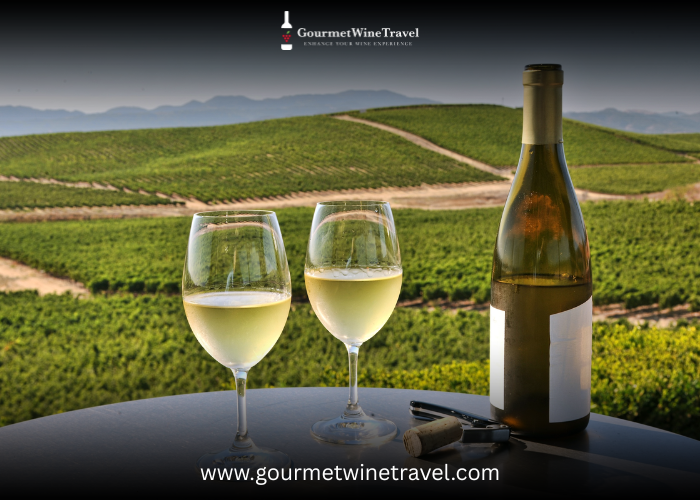
Your Guide to the Best Alentejo Wine Tour in Portugal
Portugal’s Alentejo area is sometimes referred to as the country’s sleeping giant—a place of golden plains, rolling vineyards, cork woods, and timeless towns where life moves at a pleasantly languid pace. While Porto and the Douro Valley are frequently highlighted, Alentejo is Portugal’s wine heartland, producing some of the country’s most thrilling reds, delicate whites, and one-of-a-kind blended wines.
Whether you’re a seasoned oenophile or a curious visitor, an Alentejo wine tour is more than just sampling excellent vintages; it’s a voyage through centuries of wine-shaped history, culture, and landscapes.
In this guide, we’ll go over everything you need to know to plan the perfect Alentejo wine tour, including the top wineries and wine varieties, area attractions, seasonal suggestions, and how to make the most of your stay.
Why Choose Alentejo for a Wine Tour?
Alentejo is large, covering about one-third of Portugal, but it feels personal and welcome. Here’s why it’s an ideal trip for wine lovers:
Rich Wine Heritage: Winemaking in Alentejo stretches back to the Romans, and amphora-style fermentation is still used in some estates.
Wine Styles: From powerful, sun-soaked reds to crisp, refreshing whites, there is something for everyone’s taste.
Unspoiled scenery: Sweeping plains, olive groves, and old hilltop towns provide a lovely backdrop for tastings.
Authentic Experiences: Smaller crowds result in more personal experiences with winemakers.
The Wines of Alentejo: What to Expect?
Before you set out, you should know what’s in your glass.
Red Wines
The reds of Alentejo are warm, generous, and full-bodied, reflecting the region’s sunny atmosphere. The most common grape types are:
- Aragonez (Tempranillo) is rich and fruity, with soft tannins.
- Trincadeira is aromatic, with earthy and spicy undertones.
- Alicante Bouschet is richly colored, powerful, and age-worthy.
White Wines
While reds dominate, Alentejo’s whites are gaining popularity:
- Antão Vaz: Occasionally matured in oak, this wine has rich, tropical fruit scents.
- Arinto: Citrusy, refreshing, and ideal for balancing mixes.
- Roupeiro: Floral and fruity with a mild, refreshing finish.
Amphora Wines (Vinho de Talha)
A UNESCO-recognized tradition where wine is fermented in large clay vessels — earthy, complex, and truly unique.
The Main Wine Subregions of Alentejo
Alentejo is divided into eight subregions, each with distinct terroirs:
- Portalegre – Cooler climate, producing elegant reds and fresh whites.
- Borba – Known for structured reds and mineral-driven whites.
- Redondo – Balanced wines with a touch of spice.
- Reguengos – Powerful reds with aging potential.
- Vidigueira – Famous for white wines, especially Antão Vaz.
- Moura – Warm climate, producing smooth, ripe reds.
- Granja-Amareleja – Intense reds, often from old vines.
- Évora – Small but historically rich, with boutique producers.
Must-Visit Wineries in Alentejo
Here are some Alentejo’s famous wineries to include on your itinerary:
1. Herdade do Esporão (Reguengos de Monsaraz)
One of Alentejo’s most iconic estates, offering guided tours, tastings, and a fine-dining restaurant. Known for both traditional and experimental wines.
2. Adega Mayor (Campo Maior)
Designed by renowned architect Siza Vieira, this winery is a fusion of modern design and winemaking excellence.
3. Cartuxa (Évora)
Home to the famous Pêra-Manca wine, Cartuxa blends history with premium winemaking. Their tasting room is set in a former Jesuit refectory.
4. Quinta do Quetzal (Vidigueira)
Combines a contemporary art center with superb wines and a panoramic restaurant.
5. Herdade dos Grous (near Beja)
A luxurious wine estate with a boutique hotel, perfect for a full day or overnight stay.
Best Time to Visit Alentejo
- Spring (March–May): Pleasant weather, blooming landscapes, fewer crowds.
- Autumn (September–October): Harvest season — vibrant energy, grape picking, and fresh must tastings.
Tips for an unforgettable Wine Tour
- Book Ahead: Many vineyards require appointments for tours and tastings.
- Pace Yourself: Visit only 2-3 wineries every day to truly enjoy each experience.
- Stay Overnight: Charming guesthouses and wine hotels allow you to absorb up the atmosphere.
- Hire a Driver or Take a Tour: You can enjoy tastings without worrying about the road.
- Beyond Wine: Discover cork oak woods, megalithic ruins, and artisan workshops.
Bringing Alentejo Home
Many wineries provide shipping, allowing you to bring your favorites back without worrying about luggage weight. Look for wines that are difficult to find outside of Portugal; they make excellent keepsakes or gifts.
Conclusion
An Alentejo wine tour is more than just a sampling trip; it’s a gradual journey into Portugal’s soul. Between the old towns, sunlit vineyards, great hospitality, and superb wines, the experience lasts long after the last glass is poured.
Alentejo captures your senses and heart, whether you’re swirling a glass of inky Alicante Bouschet under the shade of an olive tree or sipping crisp Antão Vaz as the sun sets over golden meadows.
So wrap your curiosity, a thirst for knowledge, and let Alentejo give you the warmest welcome.


Recent Comments